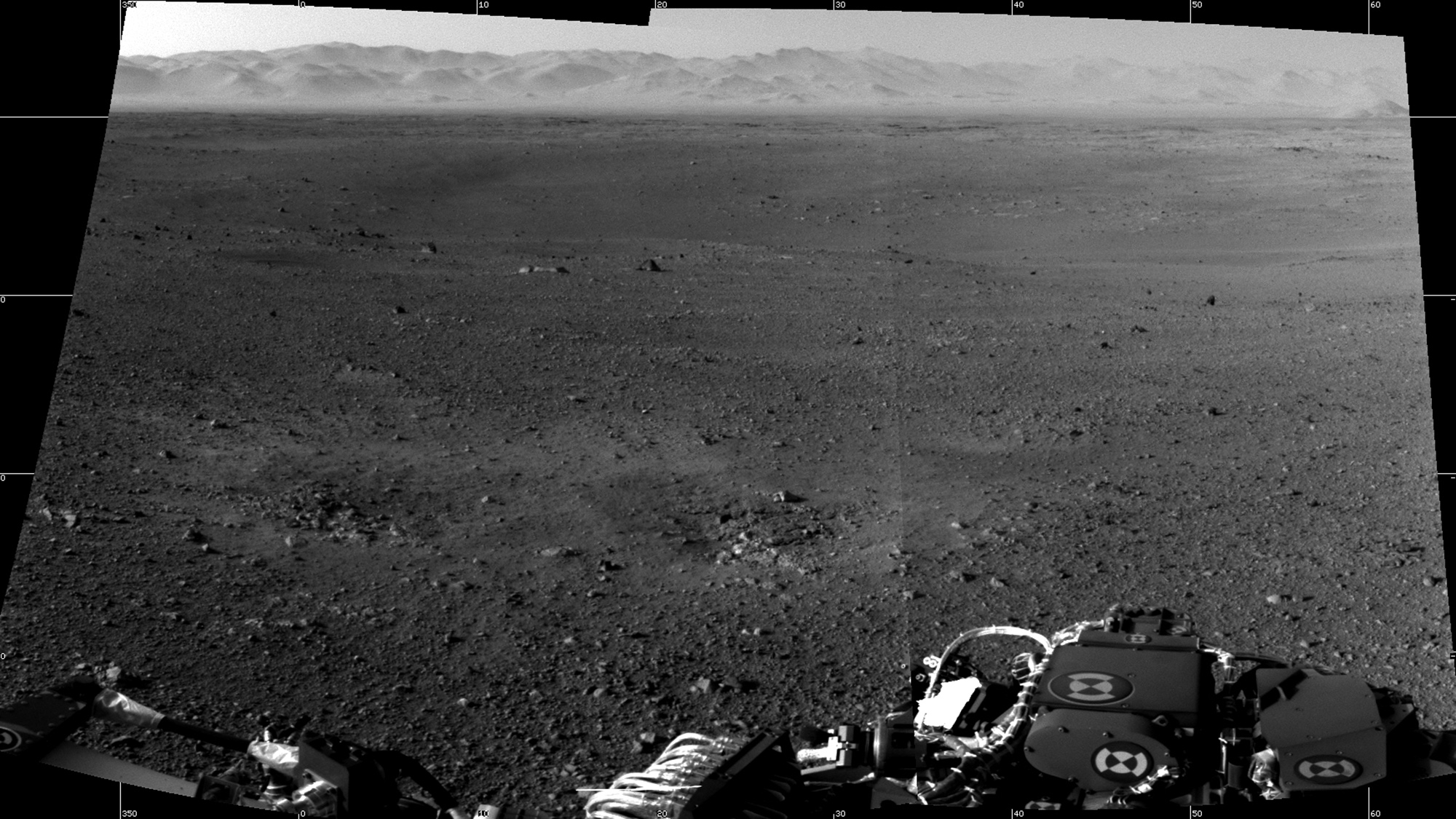
The rim and floor of Gale Crater as seen from NASA’s Curiosity Rover. Credit: NASA
Today, Mars is cold and dry. Billions of years ago, however, there was liquid water on its surface—and scientists have long been fascinated by what the planet could have been like at that time. A new study, published in Communications Earth and Environment on July 7, examines data from soil samples gathered by NASA’s Curiosity rover and compares them to similar soil on Earth. This provides a window into what the Martian surface was like billions of years ago—and the data suggests that it was that it was really a cold, wet wasteland of a planet.
[ Related: NASA’s Curiosity rover captures a moody Martian sunset for the first time ]
Curiosity has spent over a decade in the Gale Crater, the Martian landmark in which it landed in 2012. The 100-mile-wide crater was formed by an asteroid impact some 3.5 to 3.8 billion years ago. It was chosen as Curiosity’s landing site because of the many indications that it was once a lake. The soil samples gathered by Curiosity from the crater have several distinctive features: they contain silica, and are rich in iron but deficient in aluminum.
On Earth, this sort of soil is formed by “serpentinization”, a geological process that results in the conversion of various minerals into serpentinite. Crucially, this process requires liquid water, and as such, the presence of material with a similar composition in the Gale Crater provides further evidence that the crater was once filled with water.
The other key characteristic of the Martian samples is that they are largely “x-ray amorphous,” which means that they lack a repeating crystal structure that can be probed by x-ray diffraction. The amorphous nature of the samples came as a surprise to scientists, largely because amorphous material is generally seen as only “metastable”—as the study notes, it is “susceptible to conversion to more thermodynamically stable and more crystalline mineral phases.”
Why this hasn’t happened in Gale Crater remains unclear, but one theory is that the conversion process is held back by “kinetically limiting conditions such as colder temperatures.” If this is the case, it suggests that Mars has always been a cold place.
 Amorphous and nanocrystalline materials were confirmed through fast Fourier transform (FFT) scans presented as inset boxes. A Intermixed truly amorphous and nanocrystalline materials from the clay-size fraction from the BC horizon (23–33 cm depth interval) in the Eunice Bluff soil in the Klamath Mountains. Zones of nanocrystalline packets (FFT-2, EDS-2) contain elevated Fe content relative to truly amorphous gel material (FFT-1, EDS-1). B Amorphous gel material from the clay-size fraction from the Devil’s Punchbowl soil (C Horizon, 20–35 cm depth interval). Credit: Feldman et al.
Amorphous and nanocrystalline materials were confirmed through fast Fourier transform (FFT) scans presented as inset boxes. A Intermixed truly amorphous and nanocrystalline materials from the clay-size fraction from the BC horizon (23–33 cm depth interval) in the Eunice Bluff soil in the Klamath Mountains. Zones of nanocrystalline packets (FFT-2, EDS-2) contain elevated Fe content relative to truly amorphous gel material (FFT-1, EDS-1). B Amorphous gel material from the clay-size fraction from the Devil’s Punchbowl soil (C Horizon, 20–35 cm depth interval). Credit: Feldman et al.
Given their inability to study the Martian soil directly, the study’s authors did the next best thing: they found similar samples on Earth and studied the properties of those samples instead. They searched several locations with similar soil compositions: two sites in California’s Klamath Mountains, one in western Nevada, and one in Gros Morne National Park, located on the Canadian island of Newfoundland.
Importantly, the samples from Newfoundland were x-ray amorphous, while those from California and Nevada were not. This suggests that the cold Canadian climate has been crucial in preserving the lack of crystalline structure—and supports the theory that something similar happened on Mars: “The presence of abundant [iron]-rich amorphous material at Gale Crater is consistent with cool and wet conditions during their formation, followed by cold and dry conditions promoting their persistence.”
“This shows that you need the water there in order to form these materials,” says Anthony Feldman, a soil scientist and geomorphologist now at DRI who co-authored the study. “But it needs to be cold, near-freezing mean annual temperature conditions in order to preserve the amorphous material in the soils.”
The study provides a fascinating insight into how scientists can infer information about an environment’s distant past from its geological record. It also suggests that even in the long-past days when liquid water flowed on its cold, distant surface, the Martian environment wasn’t especially hospitable.
>>> Read full article>>>
Copyright for syndicated content belongs to the linked Source : Popular Science – https://www.popsci.com/science/mars-icy/




















![Forest ecology cannot be reduced to arithmetic, says M.I. Varghese [Interview] – Mongabay-India](https://earth-news.info/wp-content/uploads/2025/12/328946-forest-ecology-cannot-be-reduced-to-arithmetic-says-mi-varghese-interview-mongabay-india-350x250.jpg)










![Forest ecology cannot be reduced to arithmetic, says M.I. Varghese [Interview] – Mongabay-India](https://earth-news.info/wp-content/uploads/2025/12/328946-forest-ecology-cannot-be-reduced-to-arithmetic-says-mi-varghese-interview-mongabay-india-120x86.jpg)